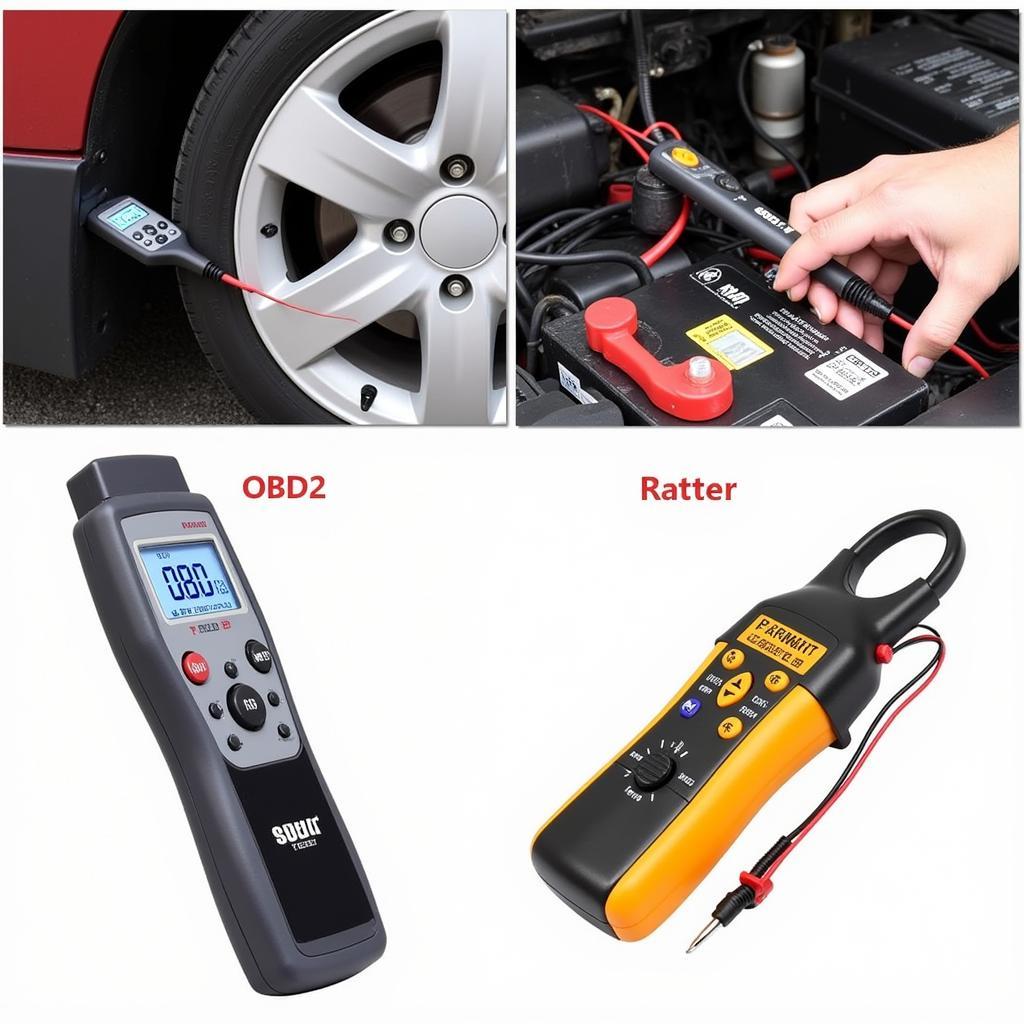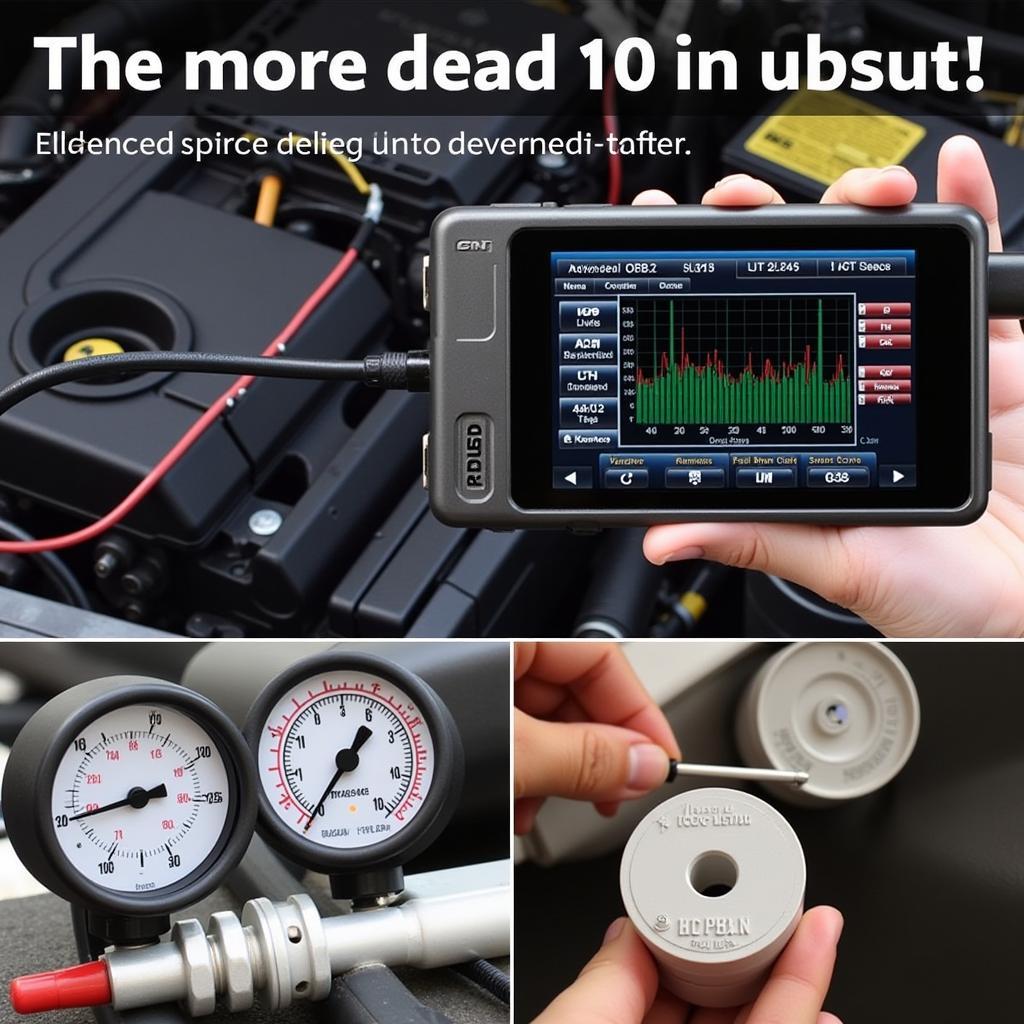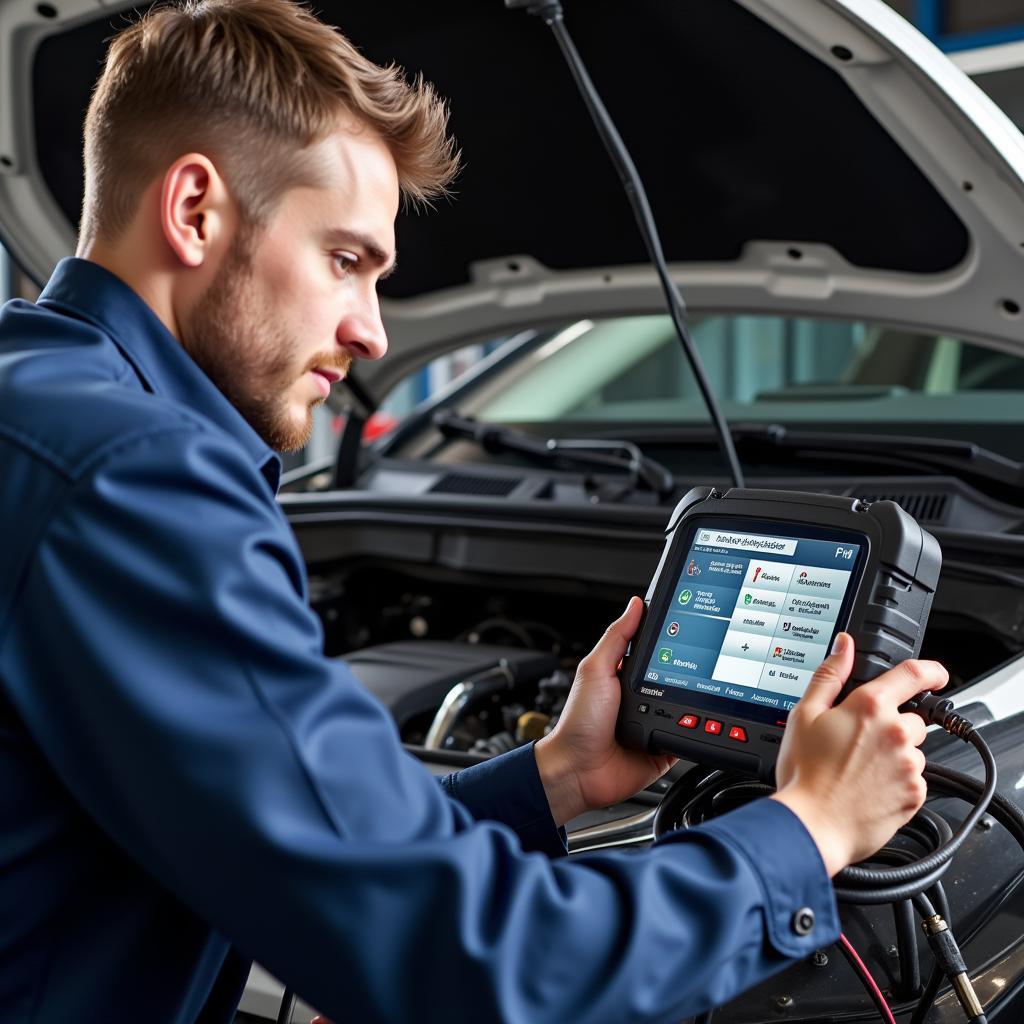Owning a car brings freedom and convenience, but also the responsibility of maintenance. For inexperienced car owners, car diagnostics can feel daunting. What Tools Needed For Inexperience Car Owner to confidently tackle minor issues and understand their vehicle better? This guide provides a comprehensive overview of essential car diagnostic tools, empowering you to take control of your car’s health.
Demystifying Car Diagnostics for the Beginner
Modern vehicles are complex machines, but basic diagnostics are within reach for even the newest car owner. Understanding a few key tools can help you identify problems early, saving you time and money in the long run. These tools range from simple and affordable to more advanced options for those willing to invest further. We’ll explore the benefits and limitations of each, providing you with the knowledge to choose the right tools for your needs. This knowledge will help you communicate more effectively with mechanics, ensuring you receive the best possible service.
Must-Have Diagnostic Tools for Every Car Owner
Several essential tools are invaluable for any car owner, regardless of their experience level. These include:
- OBD-II Scanner: This handheld device plugs into your car’s OBD-II port and reads diagnostic trouble codes (DTCs). These codes pinpoint potential issues within your car’s systems. A basic code reader can be incredibly helpful in understanding why your check engine light is on.
- Tire Pressure Gauge: Maintaining correct tire pressure is crucial for safety and fuel efficiency. A reliable tire pressure gauge allows you to regularly check and adjust tire pressure, preventing uneven wear and tear and improving gas mileage.
- Multimeter: This versatile tool measures voltage, current, and resistance, allowing you to diagnose electrical problems in your car. From checking battery health to testing fuses, a multimeter is an essential tool for any DIY enthusiast.
- Basic Hand Tools: A set of basic hand tools, including screwdrivers, wrenches, and pliers, is necessary for simple tasks like changing a battery, replacing a fuse, or tightening loose connections.
 OBD2 Scanner, Tire Pressure Gauge and Multimeter
OBD2 Scanner, Tire Pressure Gauge and Multimeter
Taking Diagnostics a Step Further: Intermediate Tools
Once you’re comfortable with the basics, consider these intermediate tools to expand your diagnostic capabilities:
- Advanced OBD-II Scanner: While a basic code reader provides DTCs, an advanced scanner offers live data streaming, allowing you to monitor sensor readings in real-time. This provides a deeper understanding of your car’s performance and can help pinpoint intermittent issues.
- Vacuum Gauge: A vacuum gauge measures engine vacuum, providing insights into engine health and potential problems like vacuum leaks, which can affect performance and fuel economy.
- Compression Tester: This tool measures the compression pressure in each cylinder, indicating the overall health of your engine. Low compression can point to worn piston rings or valves, requiring more significant repairs.
 Advanced OBD2 Scanner, Vacuum Gauge, and Compression Tester
Advanced OBD2 Scanner, Vacuum Gauge, and Compression Tester
Leveraging Technology: Diagnostic Apps and Software
Technology is transforming car diagnostics. Numerous apps and software programs can enhance your diagnostic capabilities. These tools often work in conjunction with an OBD-II scanner, providing additional features like data logging, graphing, and even remote diagnostics.
Understanding Diagnostic Trouble Codes (DTCs)
Interpreting DTCs is crucial for effective diagnostics. While a code reader provides the code, understanding what it means requires further research. Online resources and repair manuals can help you decipher the codes and determine the appropriate course of action. Remember, DTCs are indicators, not definitive diagnoses. They point to potential areas of concern, requiring further investigation to pinpoint the exact problem.
When to Seek Professional Help
While these tools empower you to handle minor issues, some problems require professional expertise. If you encounter complex issues, unusual noises, or persistent warning lights, it’s best to consult a qualified mechanic.
John Doe, ASE Certified Master Technician, emphasizes, “These tools are fantastic for understanding your car better, but they’re not a replacement for a professional diagnosis. When in doubt, consult a trusted mechanic.”
 Mechanic Diagnosing Car with Computer
Mechanic Diagnosing Car with Computer
Conclusion
Equipping yourself with the right car diagnostic tools empowers you to understand and maintain your vehicle effectively. From simple checks to more advanced diagnostics, these tools provide valuable insights into your car’s health, saving you money and increasing your confidence as a car owner. By using the right tools needed for inexperience car owner, you can take control of your car’s maintenance and ensure a smoother, safer driving experience.
FAQ
- What is an OBD-II port? The OBD-II port is a standardized connector found in most cars manufactured after 1996. It allows access to diagnostic data from the vehicle’s computer.
- What are DTCs? DTCs are Diagnostic Trouble Codes. These codes indicate potential problems within your vehicle’s systems.
- Do I need an expensive OBD-II scanner? A basic code reader can be very helpful for beginners. More advanced scanners are available for those who want more in-depth data.
- Can I fix all car problems myself? While these tools can help you diagnose and address minor issues, complex problems often require professional assistance.
- Where can I find information about DTCs? Online resources, repair manuals, and even YouTube videos can help you understand DTCs.
- What are some other helpful tools for car maintenance? Other helpful tools include a jack, jack stands, wheel chocks, and a torque wrench.
- How often should I check my tire pressure? It’s recommended to check your tire pressure at least once a month.
Contact Us
Need assistance? Contact us via WhatsApp: +1(641)206-8880, Email: [email protected] or visit us at 910 Cedar Lane, Chicago, IL 60605, USA. Our customer service team is available 24/7.

Leave a Reply